This week marked the launch of the HPE Spaceborne Computer-2 and a new configuration. We have been following this project since 2021, when the HPE Spaceborne Computer-2 was announced. Now, the project has been launched on a SpaceX Falcon 9 rocket. The Spaceborne Computer project is designed to investigate the use of commercial-grade server hardware in space. The main goal of the program is to see how the hardware performs in space because traditional methods of building special space chips mean that those chips are much slower and more expensive. For missions that will rely on more heavily on AI in the future, getting more TOPS in space when latency can be measured in minutes is an important challenge. In this generation, the servers are HPE and the storage is Kioxia. That is a big deal after the first mission.
HPE Servers and Kioxia SAS and NVMe SSDs to the ISS in the HPE Spaceborne Computer-2
First off, there are two main node types for the Spaceborne Computer-2. There is a HPE Edgeline EL4000 server with a GPU. There is also a HPE DL360 Gen10.
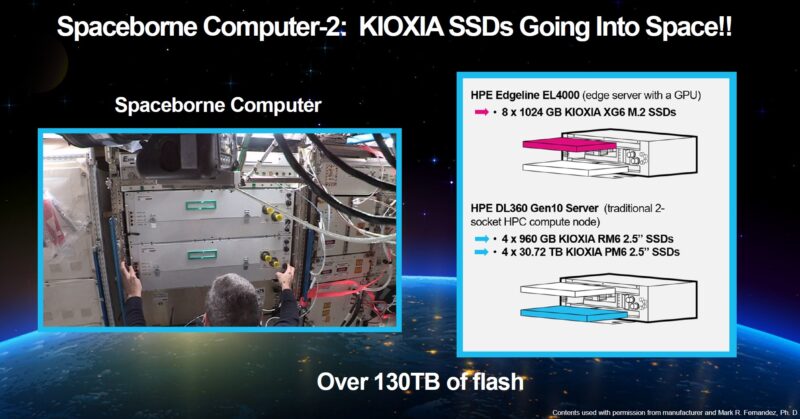
For those wondering, HPE previously told STH that the server hardware tends to be a few generations behind just because of the lengthy mission planning process. Further, after the first mission, HPE found that the servers were generally reliable, but one of the biggest challenges was actually the NAND reliability in the SSDs. That is one of the reasons that the selection of Kioxia SSDs is a bigger deal than one might assume at the outset.
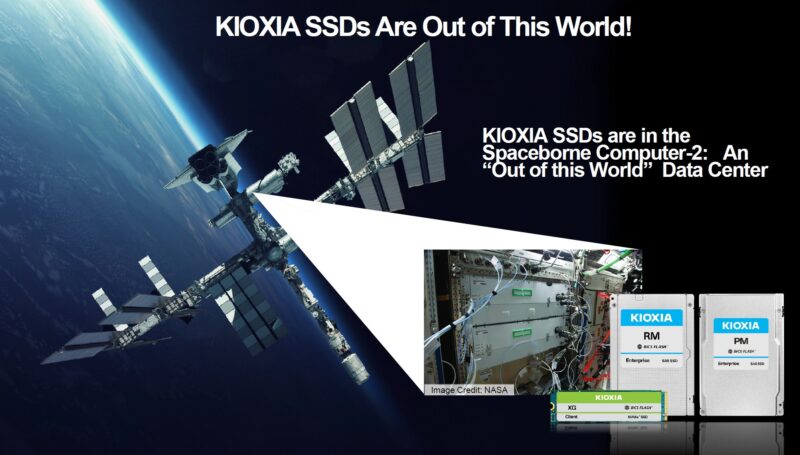
Overall, this seems to be a big upgrade over the previous generation. Here is the first generation Spaceborne Computer-1 at HPE Discover 2019.
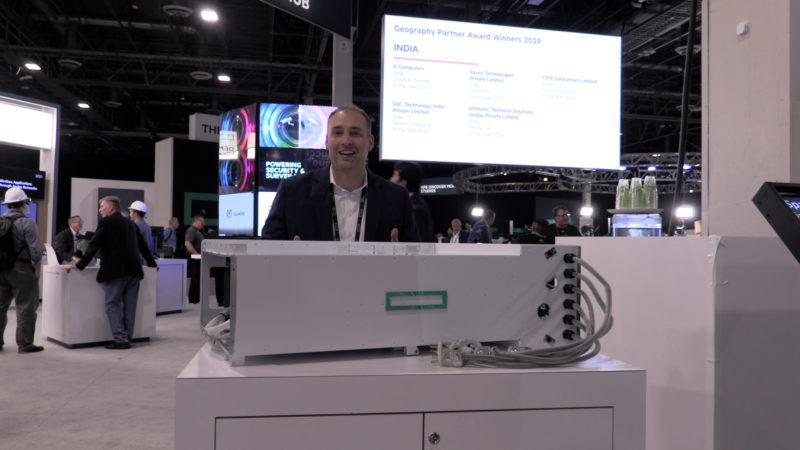
Looking in the back, we see custom cooling and power connectivity. Something else you may see is that the servers in the HPE Spaceborne Computer-1 were not HPE servers.
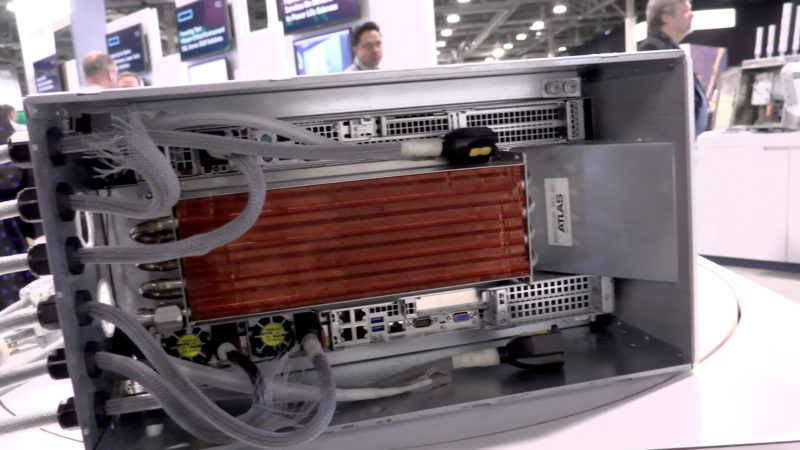
The project was started by SGI, which was later acquired by HPE. SGI’s servers were usually Supermicro. HPE used these Supermicro servers and an unnamed switch (rumored to be from a vendor that may or may not rhyme with “Swellanox”) in the first mission.
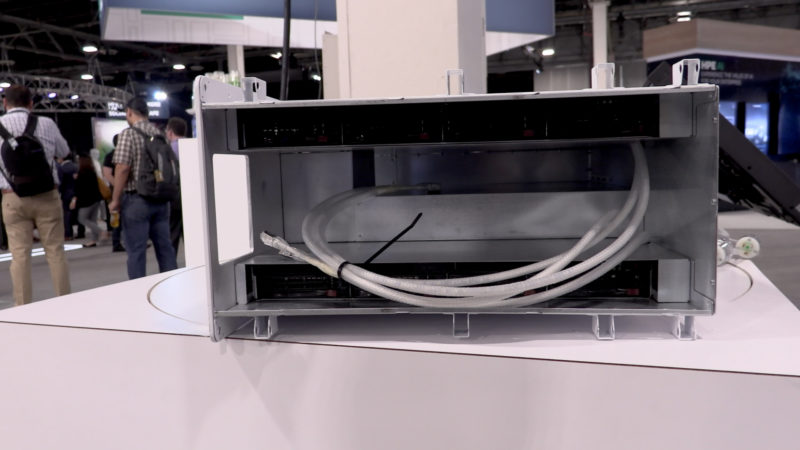
Technically, the Supermicro servers were SGI and, therefore, HPE. It also gave HPE deniability in the event the servers failed in their mission.
Instead, the servers completed their mission with great success, but the NAND storage was one of the noted challenges.
Final Words
For this mission, Kioxia SSDs are being used, and perhaps more mundane ones than we would have thought. There are four 960GB value SAS RM series drives and four 30.72TB PM6 SAS SSDs. There are also eight 1TB XG series SSDs for the Edgeline. While ~130TB of storage may not be extreme for terrestrial installations, that is a huge amount of storage for space programs. We are excited to see how the new systems and components survive their mission to the ISS with the Spaceborne Computer-2.

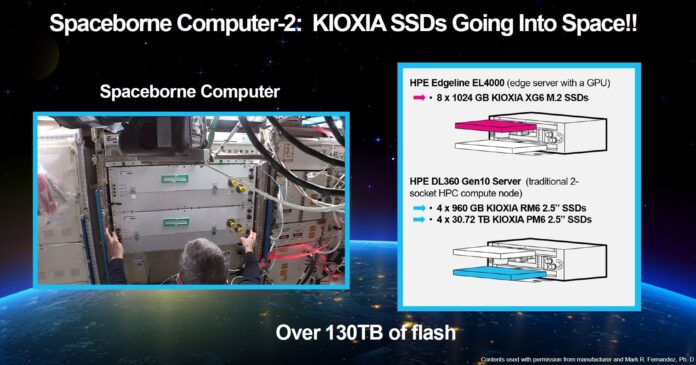


Bonjour !
Je suis taïlleur coudre les pangne traditionnel
Je ve créé atelier de couture
4 l’enfants qui travaille avec moi, me ils sont contents.
Souvent je passe visite, ils m’a dit qu’il gagne pas beaucoup, me pour manger çava.
Donc sa me plaît beaucoup.
J de créé atelier de couture
Merci de bien.